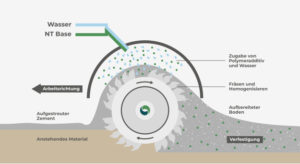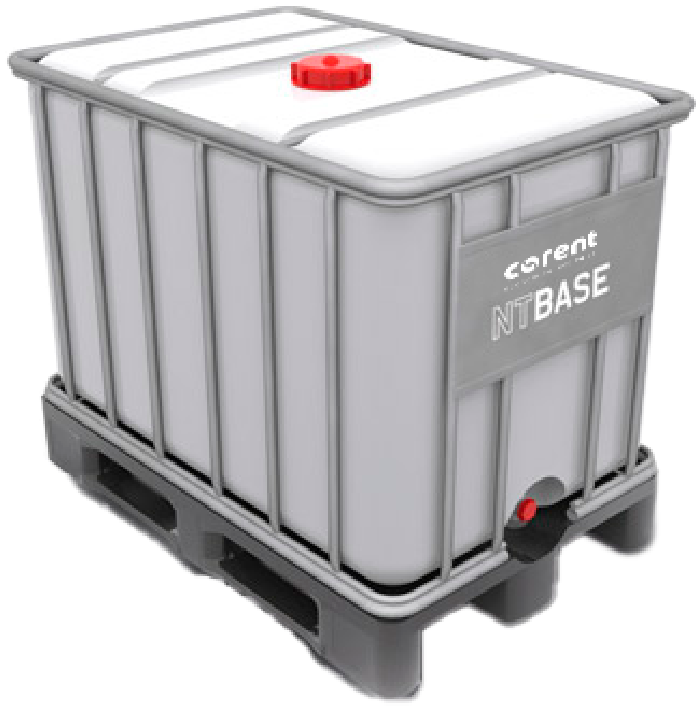NT BASE 4.0
NT BASE 4.0 is used in the substructure to improve, qualify and stabilise soil. In the superstructure, its purpose is to reinforce the hydraulic binder when making hydraulically bound base, sub-base and surface courses. Existing pavement can also be ground and restabilised by adding cement and NT BASE™.
COSTS
Construction costs and time can be greatly reduced
y cutting the expenses for soil replacement, transportation, material supplies and soil disposal.
ENVIRONMENT
The final layer is given a naturallooking surface appearance through the use of in-situ soil. Since no transport is required to and from the construction site, construction projects carried out with NT BASE® products are seen as cost-effective and resourceefficient and thus environmentally sustainable. NT BASE® products are proven to be environmentally friendly.
QUALITY
Above all else, NT BASE® products ensure that a structure lasts a long time to consequently reduce the cost and effort involved in maintenance on a significant basis.
APPLICATION
NT BASE™ MAKES THE FOLLOWING POSSIBLE:
- The lifetime of your structure is significantly extended and maintenance work is minimised.
- Formulas for different load classes: since the addition of NT BASE™ is always adjusted to the amount of cement used, excellent elasticity is maintained even when the content of cement increases.
- Disposal costs are eliminated since existing construction materials can be reused in the new structure.
- Flexible design of squares, paths and all outdoor surfaces in general: a natural look is achievable without having to sacrifice any of the advantages of a bonded surface.
GRINDING
IN SITU
Grinding is carried out on site using a grinder. Compacting is always only carried out with a static roller.

Grinding is carried out after the specified amount of cement has been distributed. In this process, the in-situ material is broken up and mixed together with the distributed cement. A mixture of water and NT BASE™ is injected into the grinding chamber. Depending on the requirements, a grinding depth of up to 50 cm can be used. Complete homogenisation is achieved by adjusting the grinding machine’s speed. After griding has been completed, a grader levels out the surface before compacting it.
IN PLANT
Preparation in a mixing plant. In the event that production is carried out in plant, we recommend using a paver for placement.
The materials are transported by lorry to a stationary or mobile mixing plant. The required amount of cement, water and NT BASE™ are added directly to the compulsory mixer, where the material mixture is homogenised. It is then loaded onto lorries, transported to the construction site and placed using a paver. The proposed elevation and flatness are achieved with a grader. The paving process is completed by compacting the pavement with a static roller.
BENEFITS
Cement pavement treated with NT BASE™ show clear improvements when it comes to:
- Life cycle assessment
- Landfill costs
- Lifetime
- Fatigue behaviour
- Resources
- Elasticity
- Construction time
- Design flexibility

CONTACT
For public and private clients, we offer solutions to implement economically and ecologically sensible infrastructure measures that make use of already existing building materials.
We do this by supporting you with our know-how from the very moment a project starts to when it ends.
corent AG
Dr.-Max-Straße 8
82031 Grünwald, Munich
Germany
